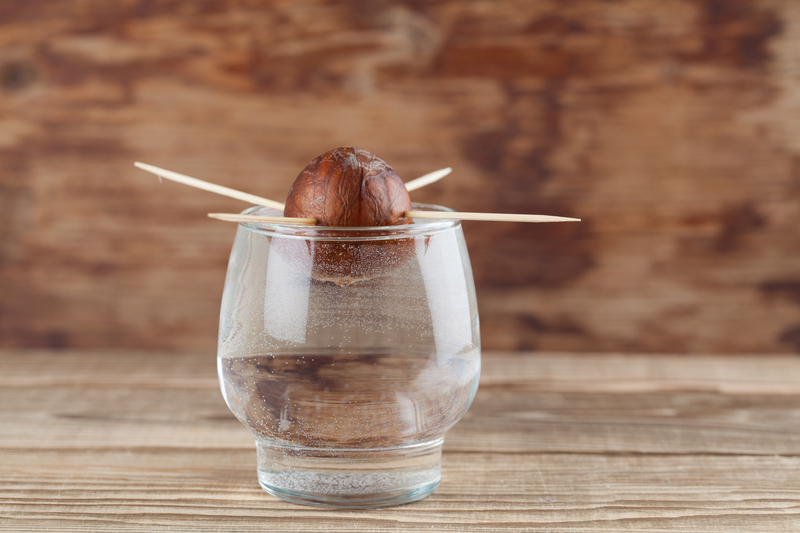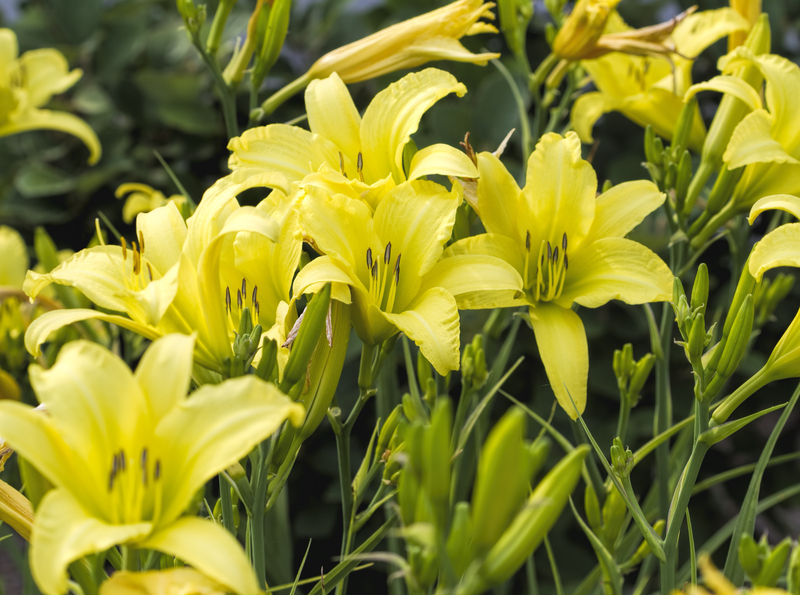Designing a Garden Both You and Your Dog Will Love
Posted on 11/09/2025
Designing a Garden Both You and Your Dog Will Love
Transforming your outdoor space into a tranquil sanctuary is a dream for many homeowners. However, when you share your home with a four-legged companion, your gardening ambitions require a thoughtful approach. Designing a dog-friendly garden doesn't mean sacrificing style or aesthetic appeal; rather, it empowers you to create an enchanting landscape where both you and your canine companion can thrive together.
Why Embrace a Pet-Friendly Garden?
A well-planned dog-friendly garden supports your pet's health and happiness while enhancing the beauty of your outdoor space. Dogs are natural explorers who benefit from secure, engaging, and safe environments. With the right garden design, you'll protect your blooms from inquisitive noses and paws, while fostering a bond with your pet through shared outdoor experiences.
- Increased safety: Eliminates toxic plants and potential hazards.
- Reduced wear and tear: Guides your pup away from delicate plants and structural features.
- Mutual happiness: Both dogs and humans relish time spent in a purposeful, serene garden.

Understanding Your Dog's Needs in the Garden
Every dog has unique preferences and quirks. To design an outdoor space for dogs and people, observe your pet's behavior:
- Does your dog love to dig or chase? Consider allocating specific zones for these activities.
- Is your pet a sunbather or do they prefer the shade? Create microclimates with planted trees or constructed shade.
- Does your dog patrol the perimeter? Leave open paths near fences for easy navigation.
By acknowledging your dog's instincts, you pave the way for fewer behavioral issues and a healthier coexistence.
Key Elements of a Dog-Friendly Garden Design
The secret to harmonizing human and canine interests centers on strategic planning. Consider these essential components to create a backyard both you and your dog will love:
1. Secure Boundaries
Fencing is fundamental for any pet-friendly landscape. Dogs need boundaries to keep them safe from external dangers and to prevent them from straying or encountering other animals. When designing your garden:
- Choose a robust fence: Select materials and heights suitable for your dog's size and energy level.
- Avoid climbable features: Opt for smooth panels or closely spaced pickets.
- Inspect for gaps: Eliminate spaces beneath gates or between slats where dogs could slip through.
2. Safe, Non-Toxic Plant Choices
Many common garden plants--such as azaleas, lilies, and foxgloves--are toxic to dogs. Planning your plant beds thoughtfully ensures your pup's safety. Opt for dog-safe flowers and shrubs like:
- Sunflowers
- Roses (thornless varieties)
- Marigolds
- Snapdragons
- Creeping thyme
- Cotoneaster
Herbs such as basil, rosemary, and parsley are also safe and add sensory interest for both people and pets.
3. Dog-Friendly Pathways and Surfaces
Paths satisfy your dog's natural urge to explore and prevent repetitive trails from damaging your lawn. Choose materials that are gentle on paws and easy on the eyes, such as:
- Pea gravel: Smooth and cool underfoot.
- Mulch: Mulch from shredded hardwood or cypress is comfortable, but avoid cocoa mulch (toxic if ingested).
- Flagstone: Flat, wide stones make sturdy walkways and won't heat up excessively in the sun.
- Artificial turf: Provides a mess-free play area and is easy to clean.
4. Play Areas and Activity Zones
Dogs need stimulation and exercise, so build specific zones for your dog's favorite activities. Popular features include:
- Agility equipment: Simple tunnels, hoops, and ramps keep pups fit and engaged.
- Sand pits: Encourage digging in designated spots to deter dogs from flower beds.
- Open lawns: Leave a patch of durable, drought-resistant grass for fetch or zoomies.
- Water features: A splash fountain, shallow pond, or doggy pool offers summer relief and fun.
5. Shady Retreats and Shelter
Dogs are susceptible to overheating, especially on hot days. Plant fast-growing trees or install garden structures like pergolas, shade sails, or even a simple tarp to provide cool places to rest.
6. Sensory Stimulation
Gardens are a feast for the senses! Use textures, scents, and interactive elements to enrich your dog's environment:
- Textured paths: Incorporate stepping stones, mulch, and pebbles.
- Scented plants: Mint, oregano, and lavender (non-toxic varieties) add olfactory delight.
- Wind chimes & garden art: Stimulate curiosity with motion and sound (securely anchored, of course).
Designing a Low-Maintenance, Beautiful Space
You want to enjoy your dog-friendly backyard--not slave away maintaining it. Streamline upkeep with these practical methods:
Resilient Plants and Lawns
- Hardy grasses: Look for blends including fescue or rye, which bounce back from traffic and urine.
- Tough ground covers: Irish moss, creeping thyme, and clover can withstand light trampling.
Smart Irrigation
- Drip irrigation systems: Conserve water, avoid soggy ground, and target plant roots directly.
- Mulching: Save water and suppress weeds with a thick mulch around plants (avoid cocoa mulch).
Simple Edging Solutions
- Sturdy edging: Stone, metal, or heavy-duty plastic keeps soil and mulch out of grass and helps define 'off-limits' areas for your dog.
- Raised beds or containers: Elevate your prized flowers out of paw's reach, minimizing accidental tramples.
Clean-Up Convenience
- Accessible waste stations: Keep bags and bins near key activity spots for easy clean-up.
- Designated potty area: Train your dog to use one spot--covered in gravel or mulch--making yard cleanup a breeze and protecting other plants.
Decor and Accessories: Personalizing Your Shared Garden
The best gardens for people and pets blend utility with personality. Elevate your landscape with:
- Comfortable seating: Benches, hammocks, or Adirondack chairs accentuate relaxation zones for you and your dog.
- Pet-safe lighting: Solar LED stake lights guide the way in the evenings while avoiding trip hazards.
- Dog houses or shelters: A snug wooden kennel or stylish shade structure offers cozy seclusion for your pup.
- Attractive pathways: Use decorative stones, mosaic tiles, or natural log slices for whimsical pet-proof trails.
Professional Tips for Long-Lasting Beauty and Safety
Experienced landscapers recommend a balance between structure and flexibility in pet-safe garden design. Here are their top suggestions:
- Introduce gradual barriers: Use low fencing, boulders, or shrubs to subtly steer your dog away from vulnerable areas.
- Consider rain and mud: Place stepping stones or gravel near entry points to minimize muddy paws in the house.
- Monitor local wildlife: Attracting birds and pollinators is lovely, but double-check to keep your dog safe from any hazards or unwelcome animal visitors.
- Regularly inspect plants and features: Remove dead leaves, thorns, and fallen fruits, and check for signs of chewing or digging.
Teaching Your Dog Good Garden Manners
The most successful dog-friendly garden designs work in tandem with basic pet training and positive reinforcement:
- Establish clear boundaries: Use gentle cues, landscaping, and treats to reinforce the right places to play, dig, or relax.
- Discourage unwanted digging or chewing: Redirect to special play areas or sandboxes; reward calm behavior in garden beds.
- Consistent supervision: Monitor your dog--especially at first--to build positive garden habits.
- Clean up regularly: Prompt waste removal and fresh water availability keep your dog healthy and the garden fresh.
Inspiring Garden Styles for Dogs and People
There's no need to compromise on style! Here are a few garden design inspirations that balance beauty with dog-friendliness:
- English cottage gardens: Informal beds and winding paths provide sniffing opportunities and a touch of romance.
- Modern minimalist yards: Clean lines, hardy grasses, and open areas for play make upkeep and navigation simple.
- Wildlife-friendly nooks: Birdbaths, pollinator plants, and non-toxic wildflowers enhance biodiversity.
- Edible gardens: Raised vegetable beds shield crops from pets, while dogs can safely munch on planted herbs or edible flowers.

Common Mistakes to Avoid in Dog-Loving Gardens
Steer clear of these common pitfalls when designing a backyard for dogs and owners:
- Ignoring plant toxicity: Always cross-check new additions with lists of pet-safe plants.
- Over-reliance on lawns: Grass alone can turn to mud with energetic dogs; mix in mulch, gravel, and hardscape.
- Skimping on shade: Dogs overheat quickly--shade is a must!
- Underestimating your dog's abilities: Some breeds can easily vault fences or dig under barriers. Make sure design choices match your dog's temperament.
Conclusion: Cultivating Joy for Both You and Your Pet
In summary, the secret to designing a garden both you and your dog will love lies in marrying aesthetics with practicality. Focus on safety, comfort, durability, and shared enjoyment. With patient observation and a dash of creative planning, you'll nurture an outdoor haven that reflects your love for nature--and your best friend.
Ready to start your own dog-friendly garden design? Prioritize your landscape's security, plant selection, zones for play and relaxation, and you'll enjoy a vibrant, lasting space to share with your canine companion. Happy gardening!

